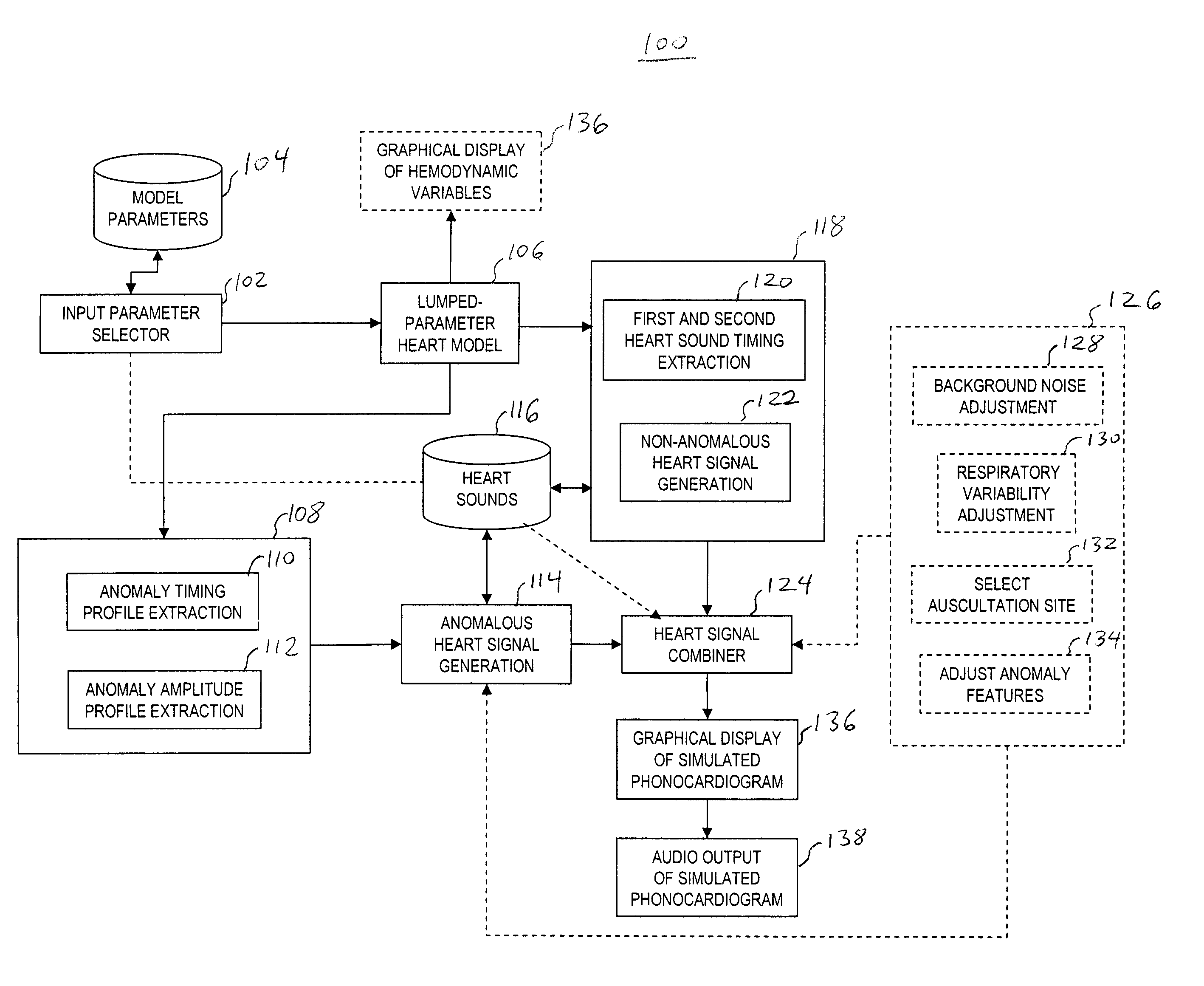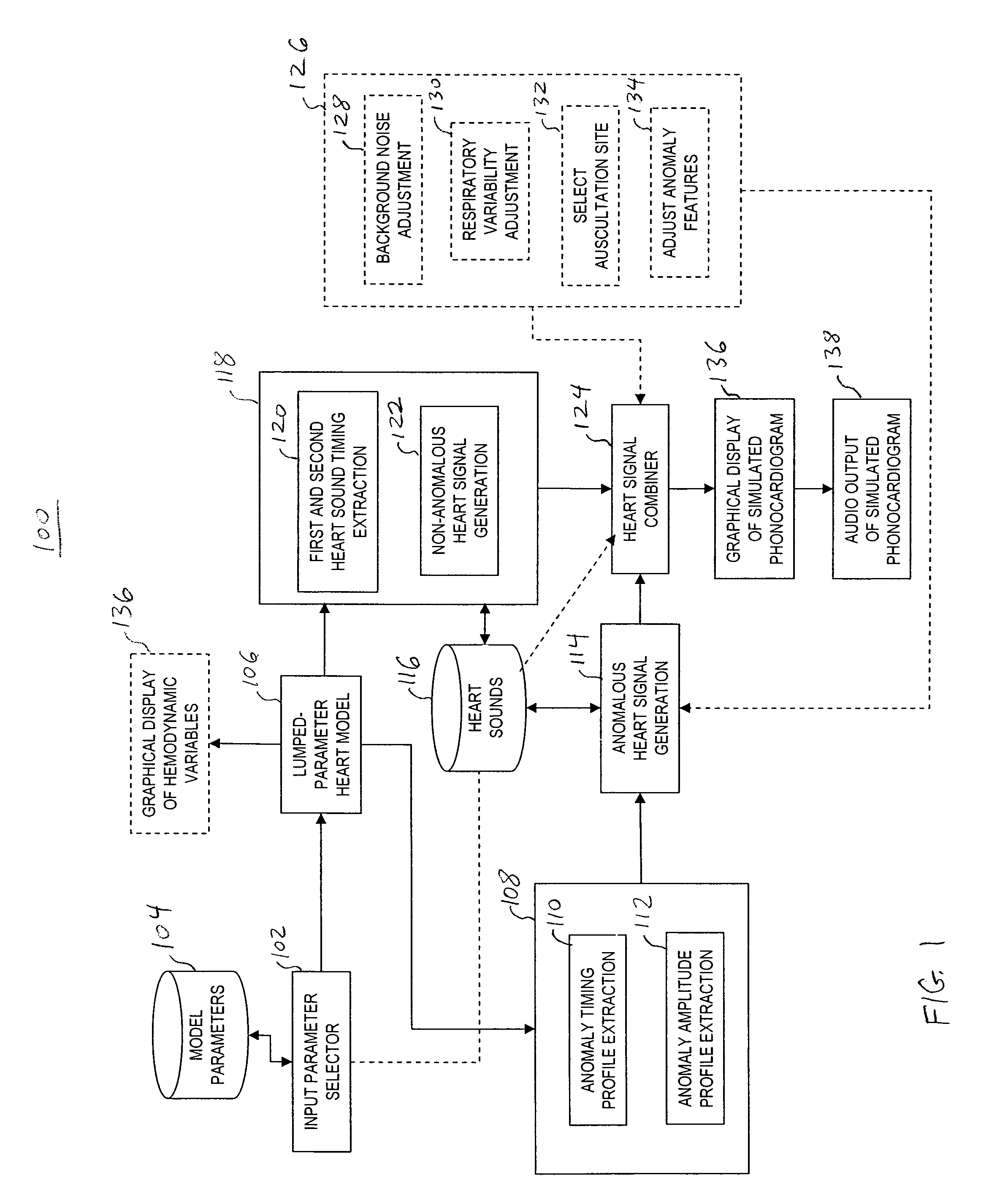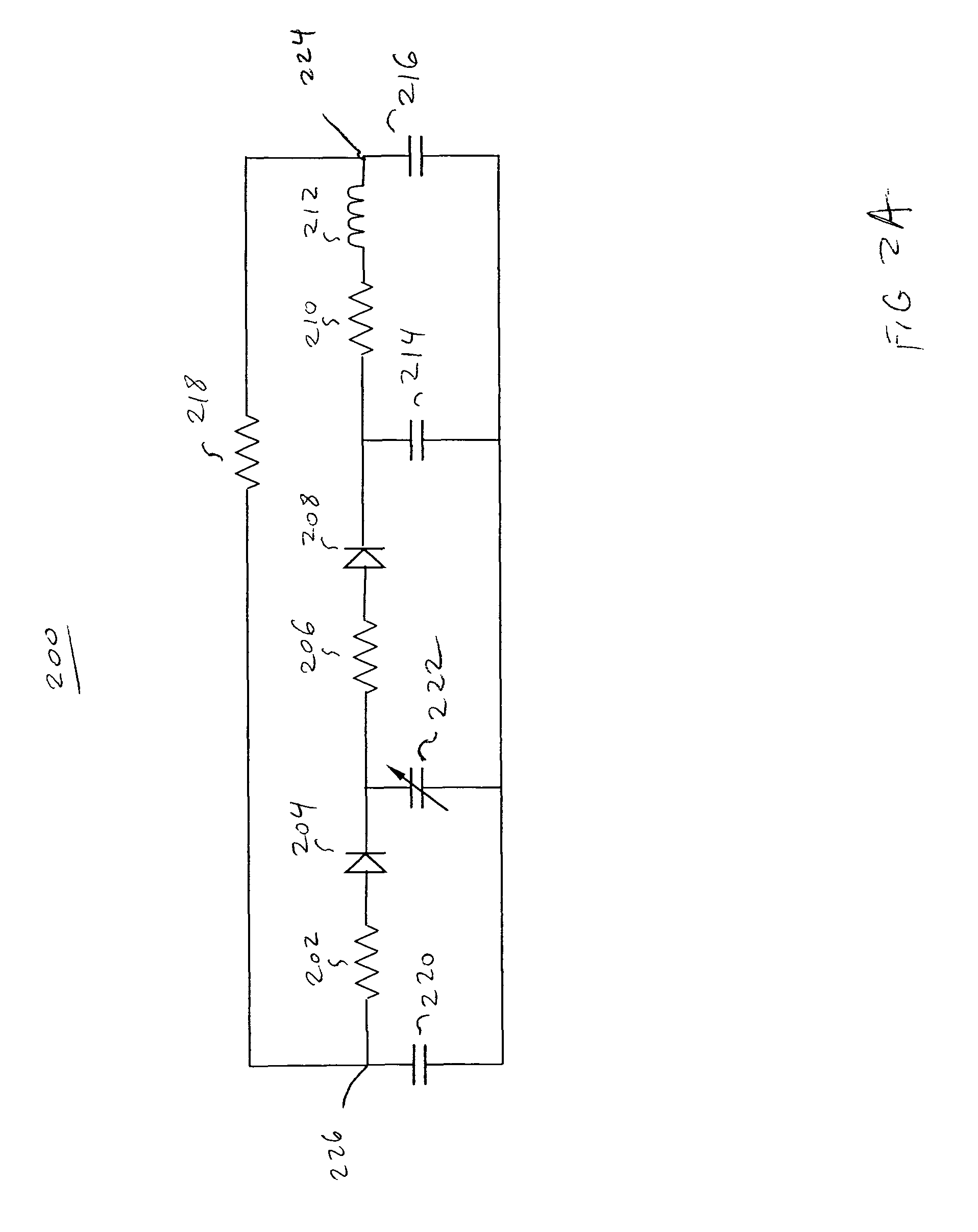Automatic generation of heart sounds and murmurs using a lumped-parameter recirculating pressure-flow model for the left heart
a recirculating pressure flow and automatic generation technology, applied in the field of auscultation training, can solve the problems of difficult human listener skills, difficult to learn auscultation, and difficult to simulate a phonocardiogram
- Summary
- Abstract
- Description
- Claims
- Application Information
AI Technical Summary
Benefits of technology
Problems solved by technology
Method used
Image
Examples
Embodiment Construction
[0027]Simulated auscultation training systems typically provide simulated phonocardiogram (PCG) signals associated with a particular anomalous condition, such as mitral regurgitation (MR). The first heart sound (S1), the second heart sound (S2) and other sounds can be inserted into a signal based upon a heart rate and known auscultation features. For example, MR includes auscultation features such as a dull or absent S1, a holosystolic murmur, a split S2, an exaggerated third heart sound (S3) and a short mid-diastolic rumble. Murmur frequency characteristics can be simulated from measured frequency characteristics of MR. A simulated signal can thus use these parameters to construct a signal representing MR, for example, by inserting recorded S1, S2 and murmur events at expected onset times at a predetermined heart rate. However, these parameters are related to auscultatory features, and may not be grounded in a physiological understanding of the hemodynamic parameters of the heart.
[...
PUM
 Login to View More
Login to View More Abstract
Description
Claims
Application Information
 Login to View More
Login to View More - R&D
- Intellectual Property
- Life Sciences
- Materials
- Tech Scout
- Unparalleled Data Quality
- Higher Quality Content
- 60% Fewer Hallucinations
Browse by: Latest US Patents, China's latest patents, Technical Efficacy Thesaurus, Application Domain, Technology Topic, Popular Technical Reports.
© 2025 PatSnap. All rights reserved.Legal|Privacy policy|Modern Slavery Act Transparency Statement|Sitemap|About US| Contact US: help@patsnap.com



